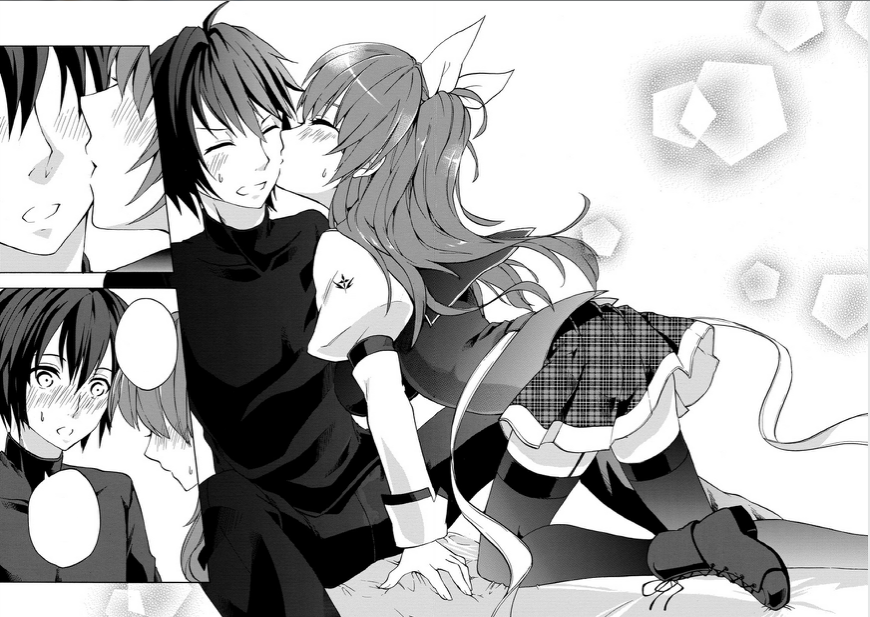
- Promise∞ring vocaloid vsq how to#
- Promise∞ring vocaloid vsq full#
- Promise∞ring vocaloid vsq software#
- Promise∞ring vocaloid vsq professional#
- Promise∞ring vocaloid vsq series#
Promise∞ring vocaloid vsq software#
Kenmochi reported the name of the software was very hard at the time to decide and "VOCALOID" had fallen into 3rd place as a choice of name. Three examples of vocal library plug-in boxart are seen this was YAMAHA's planned direction for the software LEON and LOLA were the only ones ever to be shown to the public, releasing as official voicebanks for the final VOCALOID software. The only 4 known vocals for "Daisy" were LEON, LOLA, HANAKO and TARO. "Daisy" dropped as a name due to conflicts with copyrighting - despite attempts to change the name (such as translating it into Japanese), they ultimately could not register it. "Daisy" still had troubles with consonants at the time. "Daisy" was demonstrated at the 6th anniversary of VOCALOID™, where a file called " Fly Me to the Moon" was played, the file was originally created for when Crypton were shown the first demonstration in their Sapporo office. Since they came unexpectedly, they did not realize they were VOCALOID™ demos and thought they were some sort of prank. Thus, both English and Japanese voicebanks began development.Īt the 6th anniversary of VOCALOID™, Hiroyuki Itoh noted that they received demos from Zero-G without warning of what seemed to be a male vocal singing. The first studio to enter development was Zero-G, joining in the fall of 2002, with PowerFX also joining that year. YAMAHA then attempted to find English studios to support an English version, but the majority of responses to contact were negative. The first studio to join this project was Crypton Future Media, who were contacted in May 2002. Four months later, "Daisy" began to support consonants, with the first "complete word" being "asa" (morning).īecause YAMAHA itself could only provide limited vocals, they licensed the software out to various 3rd party studios. At first, "Daisy" could only say vowels like "ai (love)". (EpR ) was developed as the first voice model and it allow the researchers to transform vocal timbres in a natural manner while preserving subtle detail. The VOCALOID™ project was originally codenamed "Daisy Project" ("DAISYプロジェクト" or "でいじぃぷろじぇくと"), a name taken from the song " Daisy Bell" and was at a prototype stage in March 2002.
Promise∞ring vocaloid vsq how to#
how to process and transform the singer recordings so that it would result in a performance of a given song sounding as natural as possible and provide the feeling of a continuous flow.how to process and transform singer recordings so that it would result in a performance of a given song sounding as natural as possible and provide the feeling of a continuous flow.They used "Elvis" as the base model for ideas and set about to tackle two main problems:
Promise∞ring vocaloid vsq full#
So, the aim of the project was to provide a fast, low cost way of getting uncanny human-like vocals to give producers full control of music production. This meant that while all other parts of the music production were by then fully able to be recreated in a DAW, producing a good quality vocal performance meant hiring a human vocalist. It was pure collaborative research, and they did not think about selling at that time.Īt the time, synthesizers would take days to produce good quality results, but the vocal would always sound inhuman and obviously generated by a machine or computer. YAMAHA itself was responsible for the product design and development of the actual product. The first initial ideas came from him in Japan in 2000, with most of the research done at the Pompeu Fabra University and the development of the core signal processing libraries created in C++. YAMAHA agreed to help them start a fresh new project it was at this point that Kenmochi Hideki joined.
Promise∞ring vocaloid vsq series#
While it did not become a product, the "Elvis Project" helped establish that a series of phonetics in a wide range of pitches would help build a synthesizer based on any model.

Promise∞ring vocaloid vsq professional#
This was due to the fact this particular project was too large due to being based on spectral morphing techniques and each song required a professional singer behind it. It did not become a product at the end of its development. The project was codenamed "Elvis" and lasted two years.

Bonada was known to have set about recording not just a song from a singer, but various ranges and pitch in an attempt to build a model that any song could be built from. Bonada worked on a research project as requested by YAMAHA which contained some "interesting" ideas. Jordi Bonada, a senior researcher at the Music Technology Group at Pompeu Fabra University in Barcelona joined the university in 1997. In the 20th century, the most successful vocal synthesizing attempt had been " Queen of the Night" from Mozart's opera The Magic Flute this had been made in 1984 by Yves Potard and Xavier Rodet using the CHANT synthesizer.


 0 kommentar(er)
0 kommentar(er)
